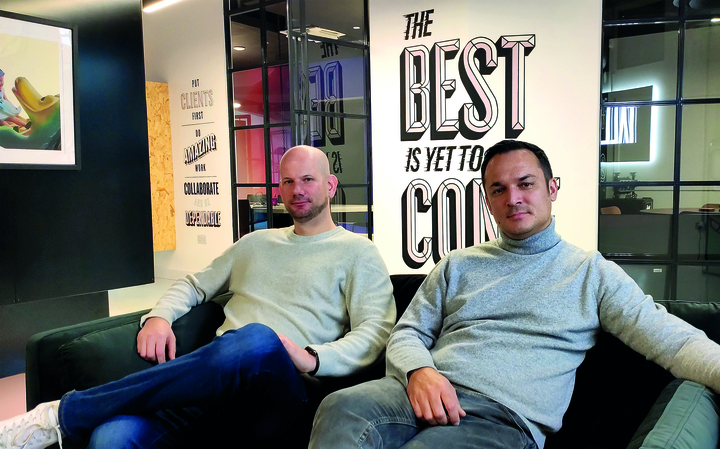Tokenisation, the process of placing digital tokens across internal design and development systems, helps to boost cross-channel consistency.
Guy Utley (pictured, left), Creative Director and Founder of digital agency Tall – which has recently introduced the service to support clients – explores the impact of smarter design systems on businesses, and why tokenisation is driving the future of brand digitisation.
Today’s consumers have increasingly high expectations of the digital world, which has only accelerated in the last few years, as we’ve had to grapple for ways to stay connected while remaining physically apart.
It’s driven a mounting pressure on businesses and our clients to create more digital products, services, and overall better online experiences.
When reviewing their branding, businesses tend to simply identify the gaps and fill them. Often, this approach is too basic and doesn’t look beyond the existing design system they have in place.
By building a new digitised design system, marketing teams, designers and developers are able to adapt to the evolving demands of consumers.
What do we mean by smarter design systems?
Tokenisation works by placing digital tokens across internal design and development systems that rename values representative of core design elements – which ultimately define a brand’s look and feel.
Consistency across digital ecosystems is made significantly more time-consuming without tokenisation and often rests in the hands of the appointed brand guardian, who is then tasked with the – often onerous – process of ensuring all physical and digital products are aligned, right down to individual colour codes.
Design tokens can easily be modified, allowing both the creative and development teams to work consistently across different platforms and minimise the likelihood of inconsistencies. Well-organised access to an in-depth library of your digital components and design decisions can prove invaluable.
For example, if marketing activations need to use a consistent colour across multiple products, instead of duplicating work, the use of a design token means any change of that colour will be automatically updated in every instance it is used, enabling clear tracking and management.
Reaping the rewards of a digital-first approach
Juggling the complexities of multiple teams, channels and locations can be a pain point for any business operating multiple brands.
By simplifying both the design and development process, and the communication required between both teams, tokenisation can boost efficiency and reduce project lead time for clients, adding instant value.
One of the biggest barriers to the adoption of a smart design system is the initial investment required to build it and embed the design tokens, paired with a limited awareness of the tokenisation process. Once you look beyond the upfront cost, the financial incentive becomes obvious – fewer costly errors and better time efficiency.
Beyond time and money saving, there is also an important governance aspect to tokenisation. Large companies often have dozens of legal documents, such as T&Cs on their website.
By switching to a smart design system, firms can guarantee that every instance of a change has been made, which is crucial if regulatory wording needs to be amended.
This single source of truth is also beneficial for scaling and faster growth while maintaining a tight level of control and knowing every element is on brand, fully tested and approved.
Driving adoption and boosting awareness will be key
For regional growth it’s vital that local businesses seek to digitalise their processes, if they want to remain relevant and responsive to the needs of consumers.
While design systems will remain functional without the use of tokens, it will become increasingly hard to compete with the efficiency and cost savings businesses who do utilise them can provide to clients.
As more of the larger companies operating across multiple brands shift to tokenised systems, it’s likely we’ll see this filter down to small companies and quickly become standard practice over the next few years.










